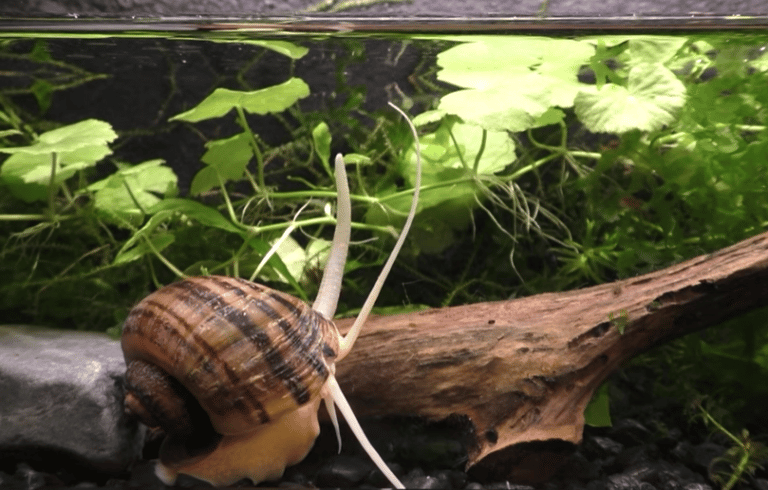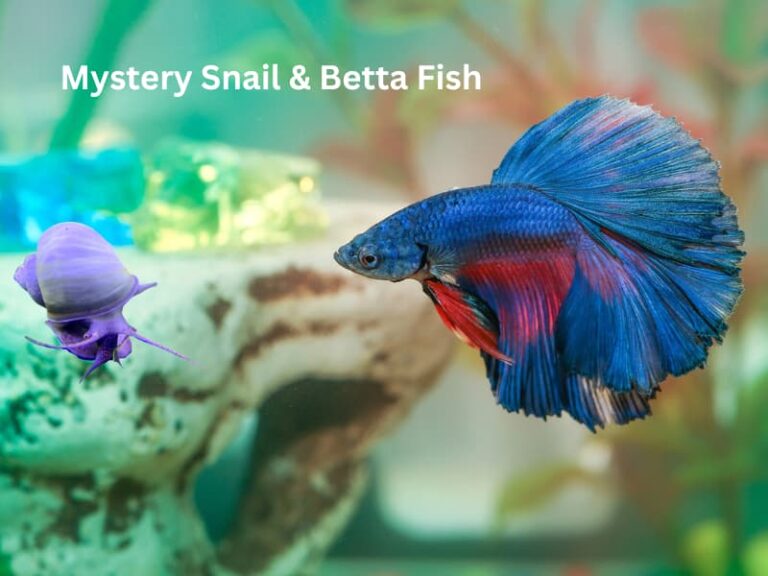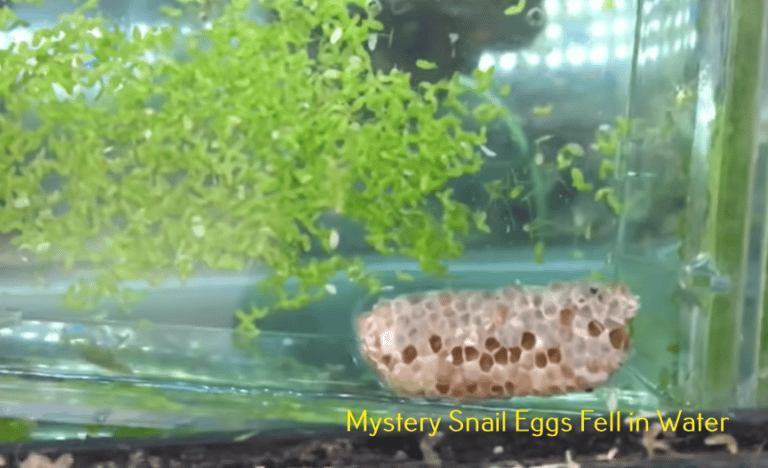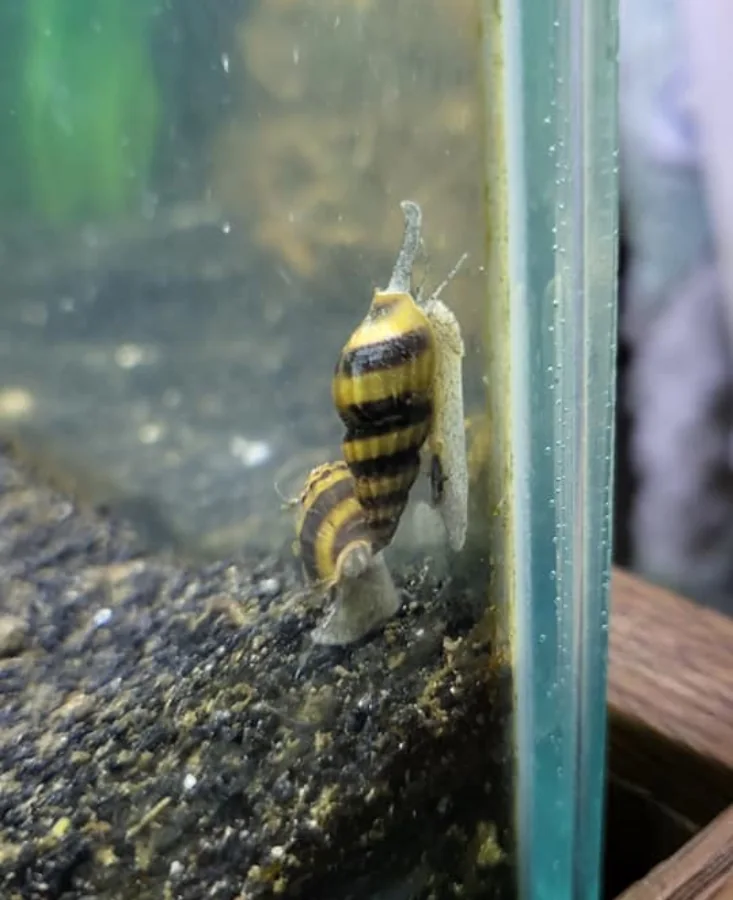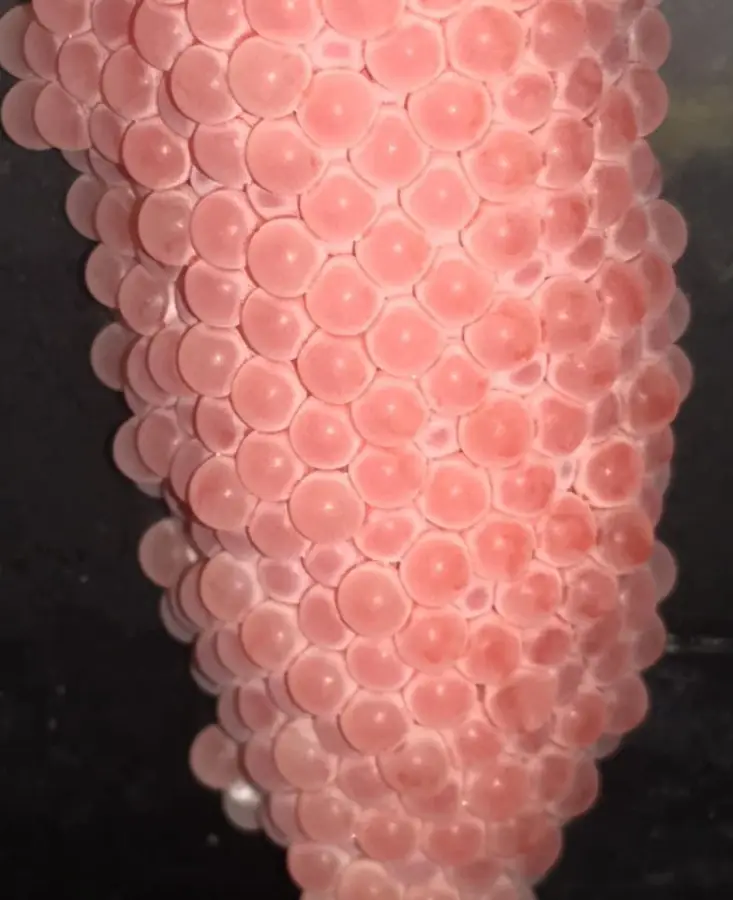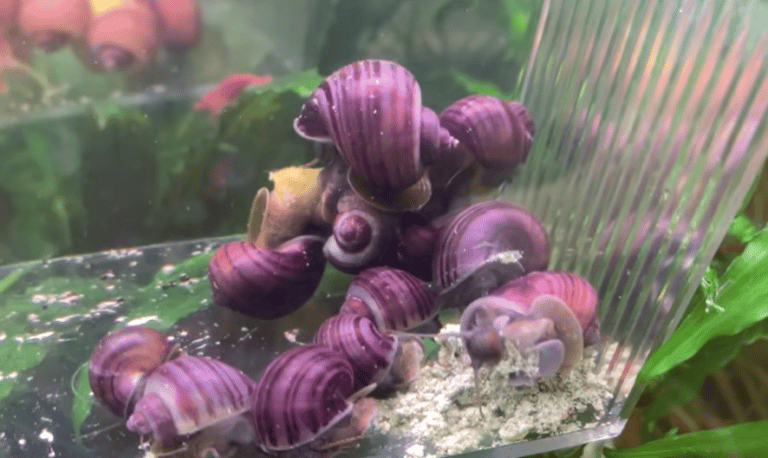Brown algae is a common problem for aquarium owners, especially in new tanks. There are many types of brown algae, but the one primarily found in aquariums is the brown silica algae (diatoms). Diatoms are unicellular organisms that can appear as solitary cells or in colonies.
Brown algae is not harmful to fish or aquarium creatures but will grow rapidly on rocks, decorations, glass, and plants, making the aquarium less attractive. When left on plants, it will prevent photosynthesis, and the plant will die slowly.
Mystery snails are good tank cleaners as they eat algae, dead fish, fish leftovers, and decaying plant matter. Having a mystery snail in your tank, you can be sure it will eat all algae, including brown algae. With the right number of mystery snails, you can have an algae-free tank at all times.
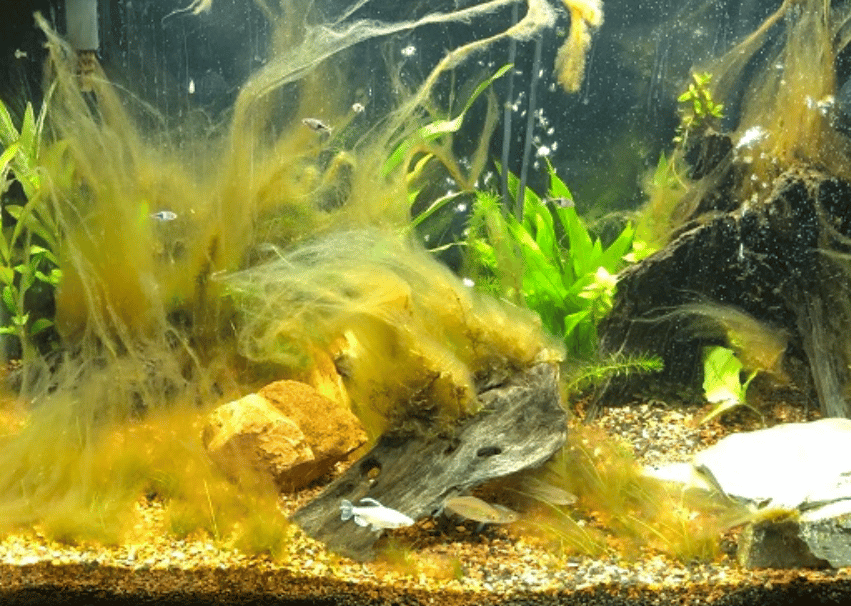
What is brown algae?
There are many types of brown algae, but brown silica algae is commonly found in freshwater and saltwater aquariums. They are diatoms or single-celled algae that have walls made of silica. Silica is often found in tap water and natural waters.
Brown algae can be a nuisance, especially for new aquarists, and mostly appear when cycling the tank. If it grows overwhelmingly, you should check on the following:
1. Silicate
Silicate is a major cause of brown algae. It can find its way into your tank through tap water or any natural water, live rocks, live sand, and salt. Silicate forms part of the diet of brown algae.
2. Nitrate
Brown algae will also feed on nitrate. Bacteria in the tank will consume ammonia released by decomposing fish food, plant matter, and fish waste and release nitrite.
Other bacteria will consume nitrite and release nitrate. The other sources of nitrate are tap water and plant fertilizers.
3. Phosphate
Brown algae will also feed on phosphate. Fish leftovers, decaying plants, dead fish, and dead algae are phosphate sources.
4. Dim lighting
Poor lighting is also a cause of the growth of brown algae. When you provide the aquarium with bright light, plants and other algae will compete for nutrients with brown algae, which will be suppressed.
Although this is a theory, experienced aquarists say brown algae will not thrive under bright light.
Does brown algae mean my tank is cycled?
Cycling is the process of establishing living bacteria in the aquarium to regulate the nitrogen cycle. The nitrogen cycle occurs when ammonia is taken up by bacteria and converted to nitrite, which is also taken up by bacteria and converted to nitrate.
If the cycle is incomplete, your fish will die from the new tank syndrome.
Nitrate is an essential nutrient for plants and algae, and its presence will encourage the growth of brown algae. The growth of brown algae can indicate that the tank is cycled. However, it is not a guarantee.
Brown algae can also thrive by feeding on silicate and phosphate. Therefore, assuming the tank is cycled just by the presence of brown algae is wrong. The only way to know the tank is cycled is by doing water tests.
Brown algae can also indicate that the water chemistry is not in the right balance. Before adding fish, ensure ammonia and nitrite levels are at zero while nitrate is below 20 ppm.
How do I get rid of brown algae permanently?
Brown algae is very invasive as it can coat most surfaces of the aquarium within a short time. The algae will not harm the fish; algae-eating fish will eat it.
However, it can cover up the plant and decorations, hindering photosynthesis. It can also cover the aquarium glass, blocking the view.
The best way to control brown algae is to prevent it from growing in the first place. That can be achieved as follows:
- Clean the aquarium regularly: Cleaning the tank regularly will reduce nitrate levels. Feed the fish sufficient food and remove any leftovers and fish waste.
- Change the water regularly: Performing regular water changes will reduce the amount of waste and harmful chemicals in the water.
- Increase lighting: Brown algae typically thrive in dim light. When you increase the lighting, plants and green algae will compete for nutrients. You can light up the tank for at least 8 hours daily, but it should not be very bright as the green algae might grow overwhelmingly.
- Use reverse osmosis: Reverse osmosis water is free from chemicals such as chlorine, silicate, and phosphate. It also has a neutral pH.
- Add aquarium plants: Adding plants will minimize the growth of brown algae when these plants take up the nitrate in the water. With insufficient nitrate, brown algae will not thrive as much.
How to remove brown algae
If the algae have already grown, preventive measures will not work. You can still employ them after removing the algae successfully to ensure it does not grow again. Removing brown algae is easy because it does not stay glued onto surfaces.
The removal methods include the following:
1. Manually remove the algae
You will need a scrubbing pad and a bucket of water. Use the scrubbing pad to clean the algae from the glass, rocks, and decorations. After scrubbing, rinse the pad in clean water.
This method is not 100% accurate as some algae will drop in the water and might grow again. It needs to be accompanied by a water change.
2. Vacuuming the substrate
Removing brown algae from the gravel is the hard part. Using a siphon vacuum will quickly remove it and ensure it does not grow back as quickly.
3. Add algae eaters to the tank
Living organisms like copepods plus other invertebrates will feed on brown algae. Although this might be an effective way to clean the tank, you should consider the long-term survival of the pet.
Some fish, such as Kuhli loaches, may eat the snails you introduce in the tank to eat the algae.
Although ramshorn snails are great algae eaters, they are prolific breeders and will overrun the tank. Other options include mystery snails, plecostomus, and otocinclus catfish. However, nerite snails are preferred because they are peaceful and will not breed in freshwater.
Recap
Brown algae love to grow in newly established tanks but this does not mean the tank is cycled. Brown algae feed on silicate, nitrate, and phosphate and will appear in any tank with these compounds.
You can prevent the algae from growing by cleaning the tank regularly and performing regular water changes. You can also add aquarium plants or use reverse osmosis.
To remove brown algae, you can clean any surface on which the algae are growing or get an algae-eating fish or snails like mystery snails. Mystery snails do not feed on algae only, and if your tank is overwhelmed by algae, they’ll take long to clean it.
Instead, you can get the right population of nerite snails because they clean brown algae faster than mystery snails. Ramshorn snails also eat algae.
Recommended reads:
- Are strawberries safe for mystery snails?
- Do assassin snails kill mystery snails?
- Can mystery snails eat fish eggs?

